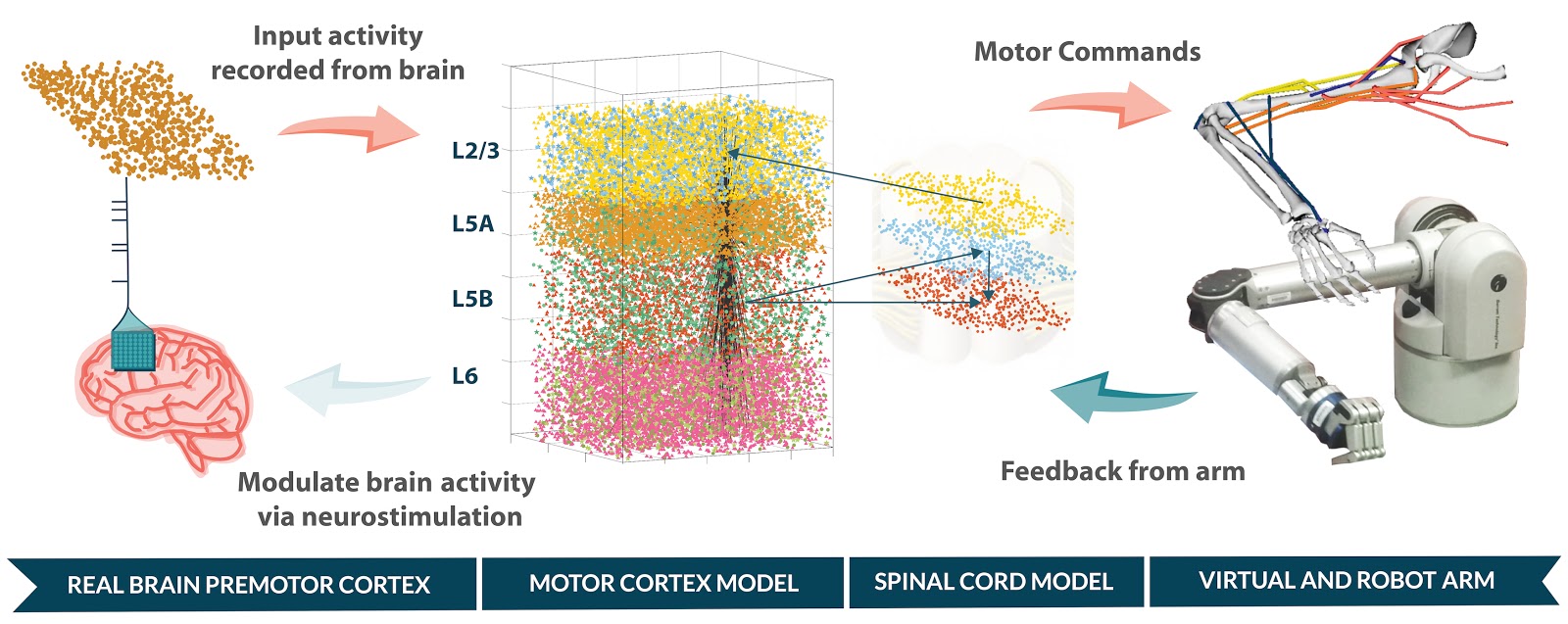The purpose of this effort is to fuse computational and biological principles to develop realistic computational models of the sensorimotor system, which can be used in a silico/biological coadaptive symbiotic system of rehabilitation. This effort shall focus on the creation of new technologies for use in neuroprosthetic rehabilitative solutions and the development of a test bed which that can be used to further expand integrative medical devices for repair and enhancement of biological systems.
To achieve this goal this effort shall utilize reinforcement learning (RL) as a means to link in vivo physiology with computational modeling. The RL paradigm shall be analyzed in multiple time scales in a co-adaptive symbiotic system interfacing with both in vivo neural decoders and a modeled in silico brain (ISB). These systems will be investigated to facilitate consolidation of sensorimotor programs, to analyze how perturbations of multiscale neural signals affect performance, and to describe how they allow for the compensation of deficits in the real brain and vice versa. In addition, co-adaptive interfaces shall also be considered to determine interactions that influence the net benefits of behavioral, computational, and physiological strategies between the user and models. This effort shall also employ optimized spatiotemporal microstimulation (OSTMS) to determine how neural networks process information in a manner directly applicable to simulations; the use of pharmacological agents to erase long term potentiation (LTP) to allow for realistic assessment of model and signal compensation ability; and the development of a Cyber-Workstation (CW) to study complex interactions between large-scale brain subsystems during behavioral experiments.The ultimate goal of this effort is to develop a transformative experimental and computational approach which is capable of translating a user’s intention into commands to control machines and facilitating the fusion of artificial neural substrates into biologic systems which have the capability of adaptation in a rich real-time environment for dexterous tasks.
